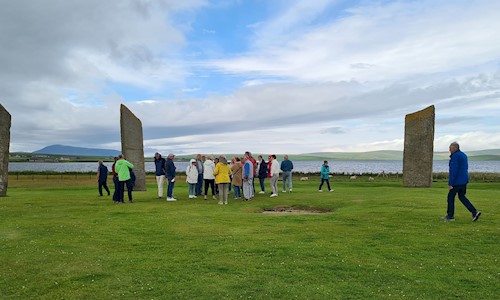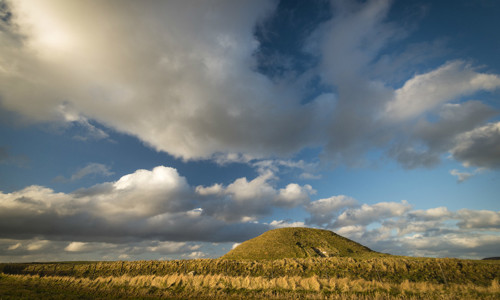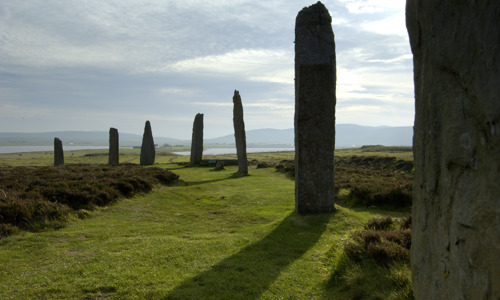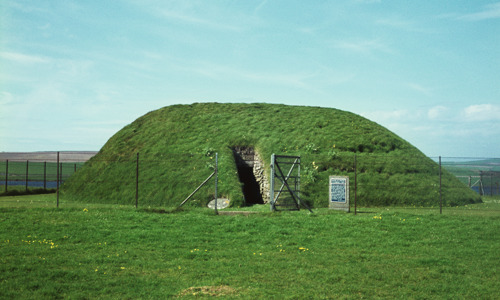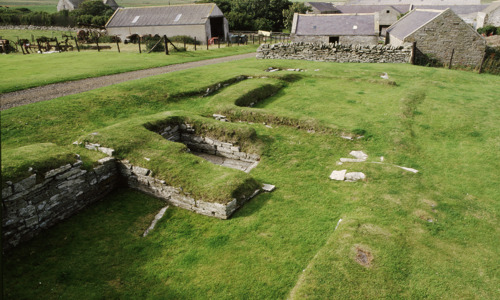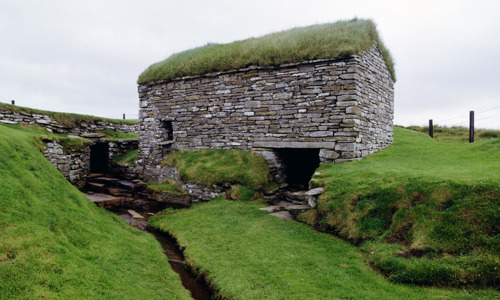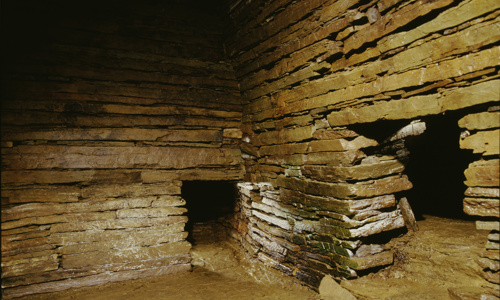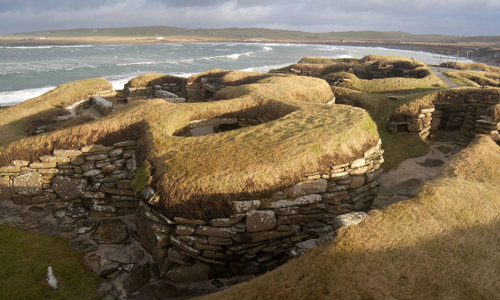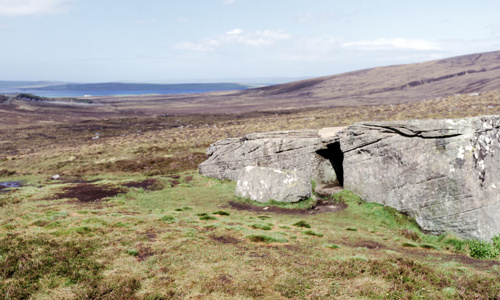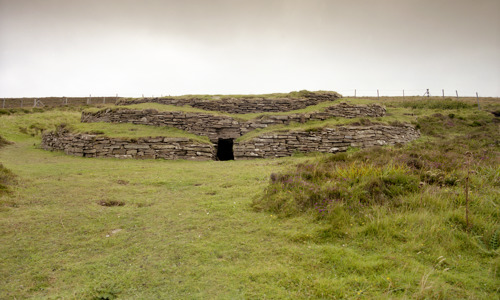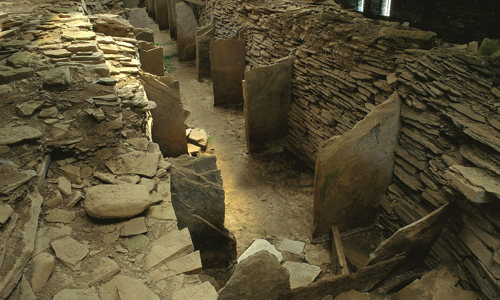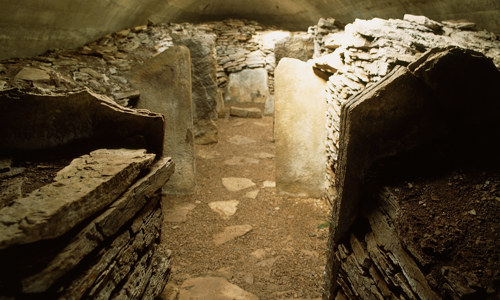History
The Stones of Stenness may be the earliest henge monument in the British Isles, built about 5,400 years ago. Their function is unclear, but our best guess is that they were involved in activities and ceremonies celebrating the relationship between living and past communities.
The monument was dated to around 3100 – 2900 BC by radiocarbon analysis of bones found in the ditch surrounding the monument. No longer visible, the ditch would have been at least 4m wide and 2m deep, and was cut into bedrock. The stones were arranged in an oval shape, about 30m in diameter, set within this enclosure.
Hearth and home
The focus of the interior was the large hearth, which is still visible today. Its significance can be seen in the line of features marking the approach to the hearth:
- a paved path
- two stone settings
- a possible second hearth
- three upright stones forming a ‘dolmen’ – a probably fanciful reconstruction of a megalithic tomb
Excavated pottery and animal bones show that Neolithic visitors cooked and ate food at the site.
Two nearby stones, called the Watch Stone and the Barnhouse Stone, are likely to have some connection with the henge.
The Heart of Neolithic Orkney
The Stones of Stenness are part of the Heart of Neolithic Orkney World Heritage Site. Along with this monument and its surrounding standing stones, the site includes:
- Maeshowe Chambered Cairn
- Skara Brae
- the Ring of Brodgar and adjacent standing stones and burial mounds
The Stones of Stenness, Skara Brae and Maeshowe were built in the first part of the 3rd millennium BC. The Ring of Brodgar was built about 500 years later.
The architectural achievements of Orkney’s Neolithic population speak of an early and sophisticated society in northern Britain. for a level of architectural sophistication which matches that of the centres in Mesopotamia and North Africa. There is a piquant contrast between the small absolute size of the Orkney community 5000 years ago and its exceptional cultural vigour.

